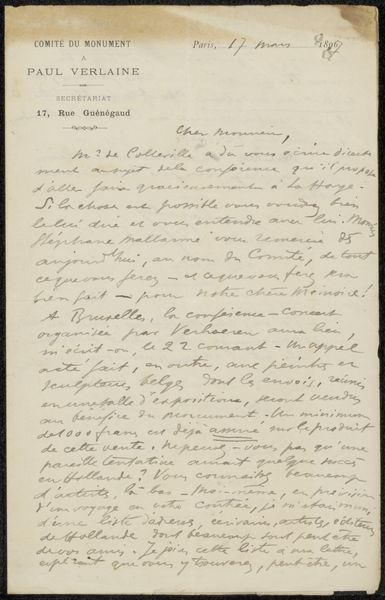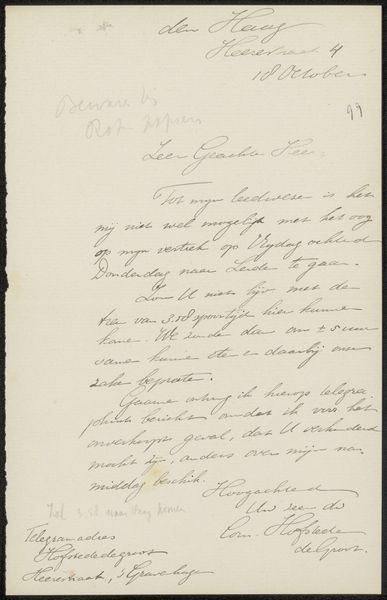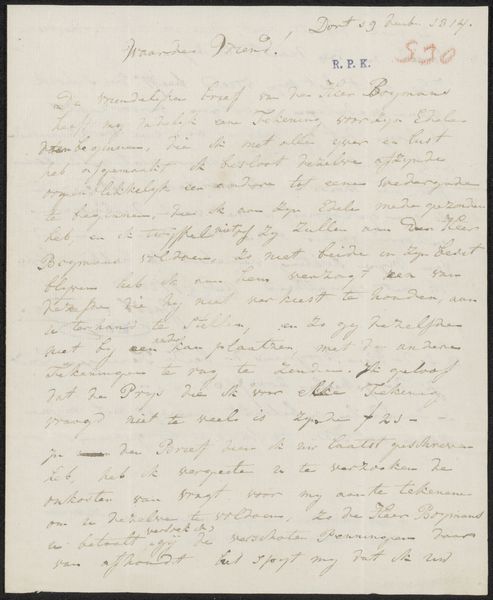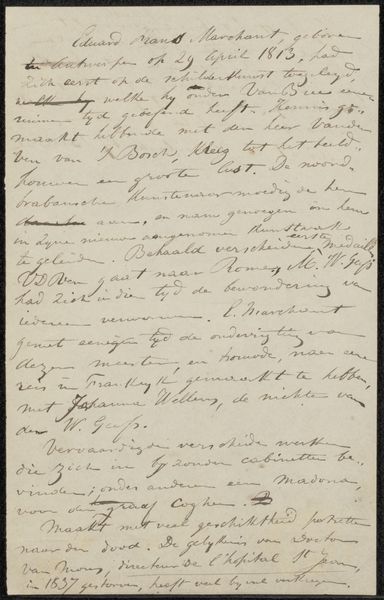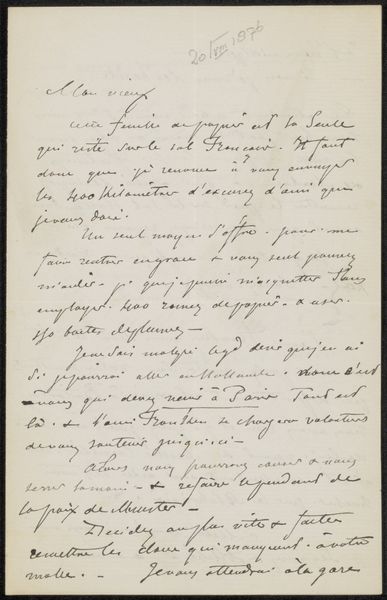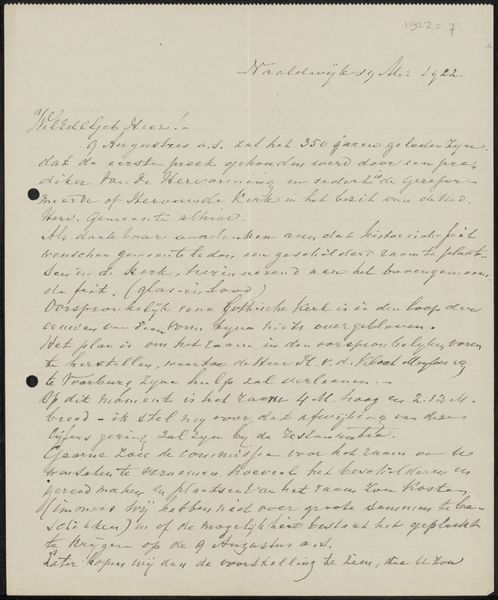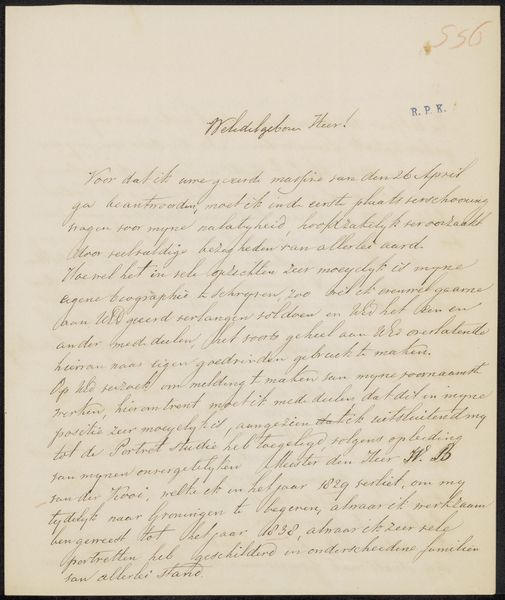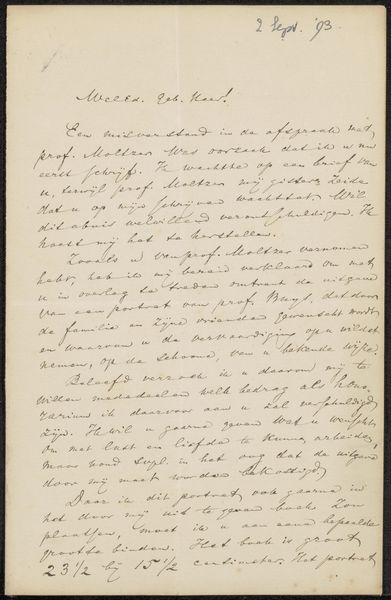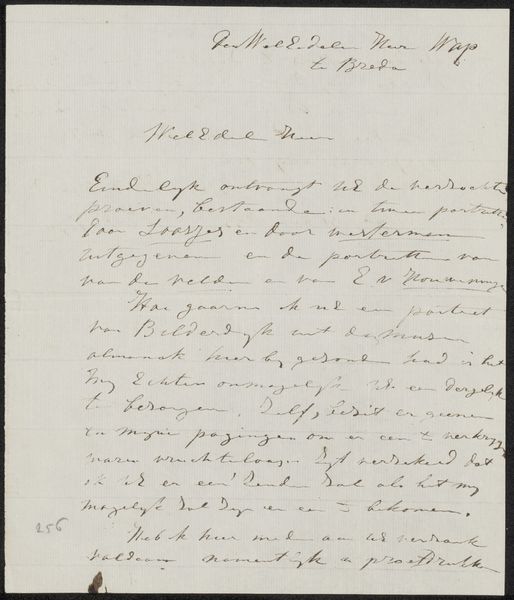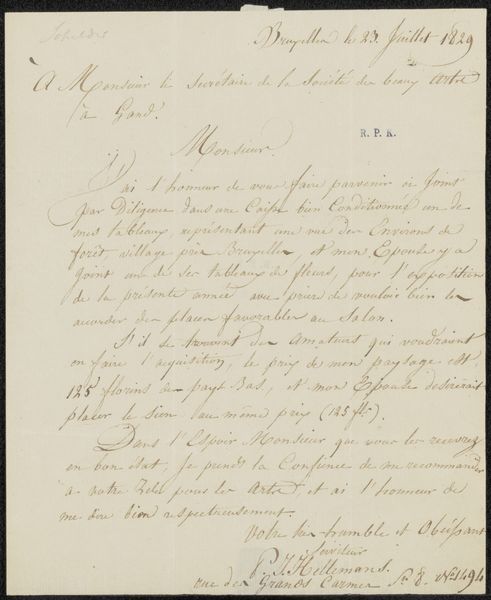
drawing, paper, ink
#
drawing
#
ink paper printed
#
paper
#
personal sketchbook
#
ink
#
calligraphy
Copyright: Rijks Museum: Open Domain
Curator: We are looking at "Brief aan Philip Zilcken," possibly created between 1886 and 1887 by Arij Prins. It's an ink drawing on paper, essentially a handwritten letter. What's your initial impression? Editor: My first impression is intimacy. It feels like peering over someone’s shoulder as they craft a message. The delicate, spidery quality of the handwriting certainly contributes to that feeling. Curator: Considering the medium, ink on paper, and the date, we can assume this was a personal correspondence, probably involving artistic or literary circles, judging by the legible references within the letter itself. The paper would have been chosen deliberately, affecting how the ink flowed and set. Editor: Yes, and notice the calligraphic quality of the handwriting. It elevates a simple letter to an art form. The careful loops and flourishes around the edges are suggestive of deliberate attention, not just scribbling off a note. There's a rhythmic, almost musical quality to the script as well. The overall presentation echoes refinement and care. Curator: Exactly. Even the act of handwriting, compared to typeset text, adds a layer of human touch and personal labor. And consider the availability and cost of paper and ink at the time. These factors speak to the value placed on communication and artistic expression. Editor: Also, I wonder about the recipient, Philip Zilcken. Was he a confidante? Perhaps a patron of Prins? I see something of Esther mentioned towards the end. There’s definitely some intimacy being offered to the recipient. Curator: Further study into Zilcken's relation to Prins and the handwriting would give insights into how information was disseminated and the labour involved. This isn't just a passive object. Editor: I see that, and I find the notion of this artifact—this personal missive, surviving through time—really very resonant. The emotional investment of artist is apparent through handwriting, transforming the document. Curator: Absolutely. A deeper look into these components reveals layers of value related to labour and exchange in that historical period. Editor: Precisely. I find it beautiful to see the depth held within this historical form.
Comments
No comments
Be the first to comment and join the conversation on the ultimate creative platform.
